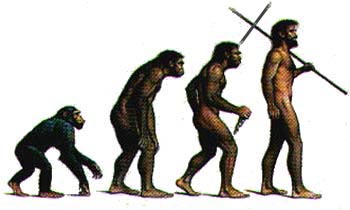Listen to these poems using the player above.
/ / /
salty dream
awaken to the chime
…sit
/ / /
deoxy-
ribonucleic acid:
me
poet, interviewer, musician, traveler
Listen to these poems using the player above.
/ / /
salty dream
awaken to the chime
…sit
/ / /
deoxy-
ribonucleic acid:
me
Listen to this song using the player above.

Fun with science
You are my superheated ball of gas
in the center of the solar system
My only superheated ball of gas
in the center of the solar system
You cause endorphins to be released
into my brain
When the refractive properties of water in the air
are overcome by cloud cover
You’ll never know, dear, how much certain
visual, olfactory and auditory cues
suggest you as a suitable mate
Please don’t remove my superheated ball of gas
in the center of the solar system
Listen to this poem using the player above.

This is the end
this is the end, so settle in
grab a bottled water
recline in your easy chair
do people still have easy chairs?
from the east-facing window
you should be able to see it coming
sweeping across the hills like
an angry sunrise, devouring
even now, when it’s far too late
many people insist it’s not real
a chimera created from the plots
of summer blockbusters by the
pocket protector crowd
because they can’t get dates
how could something so innocuous –
something that dimpled Dave
on Channel 11 uses smiley-faced suns
to explain to Ma and Pa Kettle –
possibly cause us any harm?
are we not men? have we not
mastered the universe, or at least
our small outpost within it?
Leave a CommentListen to this post using the player above.

Gingerbread Man
“I’m uncertain,” said Heisenberg.
It was true — he was hard to pin down.
You have to get up
pretty early in the morning
to catch a man
traveling 66,000 miles per hour.
To meet him halfway is a challenge;
the distance always shrinking,
never quite closing.
We are, finally, unknowable.
Not fixed in both position
and velocity, evading
capture, measurement, taxonomy.
What’s in a name? And where? And when?
Heisenberg printed a label in neat
block letters, but could find
nowhere to put it. All his photos
were blurry. He could not
recognize the faces.
Who is the nucleus, who the electron?
Who is the fixed point, who
the orbiting satellite?
Listen to this poem by pressing the play button above.
Written on a lazy afternoon while overdosing on the poetry of Robert Creeley.

Creeley’s Balloon
Why can’t we feel the Earth going around the sun?
Why can’t we feel the world spinning?
I tiptoe on squeaky floors so as not to wake my son,
while the cat sleeps on his back under two sheets of paper.
Now I’m in bed, listening to a love song by an old Nazi
and reading Creeley, most of which I don’t understand.
On the cover of the book he’s grinning,
spent cigarette in his lips, hat on the back of his head.
I think he’s in a hot-air balloon, somewhere
over the western desert.
What is lighter than air?
What is heavier than sorrow?
Faded in the background, a mesa,
above it, a cloud,
captured by the lens for just that one moment.
Who snapped the photograph?
Who is the other passenger?
“It was at those times that I carried you.â€
I used to find that so comforting
until I realized that “those timesâ€
call for us to plant our own feet in the sand,
on this shifting ground that is spinning, whirling
around a sun in a galaxy
that is itself spinning
in a universe
that is growing into something we cannot explain.
And yet
there is Creeley, now long gone,
in his hot-air balloon, smiling at me,
and I tiptoe to the bathroom, and my son stirs.
The thermodynamic arrow of time has always interested me, both as a concept and a phrase. I wrote this syllabic poem last year, my first such attempt. Thanks to Huw Price for allowing me to use the epigram.

Image courtesy of Rush W. Dozier, Codes of Evolution – the Synaptic language Language revealing the Secrets of Matter, Life, and Thought, Crown Publishers Inc., New York, 1992.
William Can’t Tell
Late in the nineteenth century, on the shoulders of Maxwell, Boltzmann and many lesser giants, physicists saw that there is a deep puzzle behind the familiar phenomena described by the new science of thermodynamics. On the one hand, many such phenomena show a striking temporal bias. They are common in one temporal orientation, but rare or non-existent in reverse. On the other hand, the underlying laws of mechanics show no such temporal preference. If they allow a process in one direction, they also allow its temporal mirror image. Hence the puzzle: if the laws are so even-handed, why are the phenomema themselves so one-sided? — Huw Price, from The Thermodynamic Arrow: Puzzles and Pseudo-Puzzles
chaos does not lessen
along the arrow’s path
and time cannot be measured
by order or its absence
the arrow flies forever
no pressure no resistance
thermodynamism
beneath the lives of every
woman, man and baby
throughout this blind creation
there is no bow, no hunter
no target, no intention
Thanks to Bookninja for the link.
Leave a Comment
My good friend Kevin Baird sent me this link to Pharyngula’s collection of the Top 50 Evolution Myths.
Comments closed